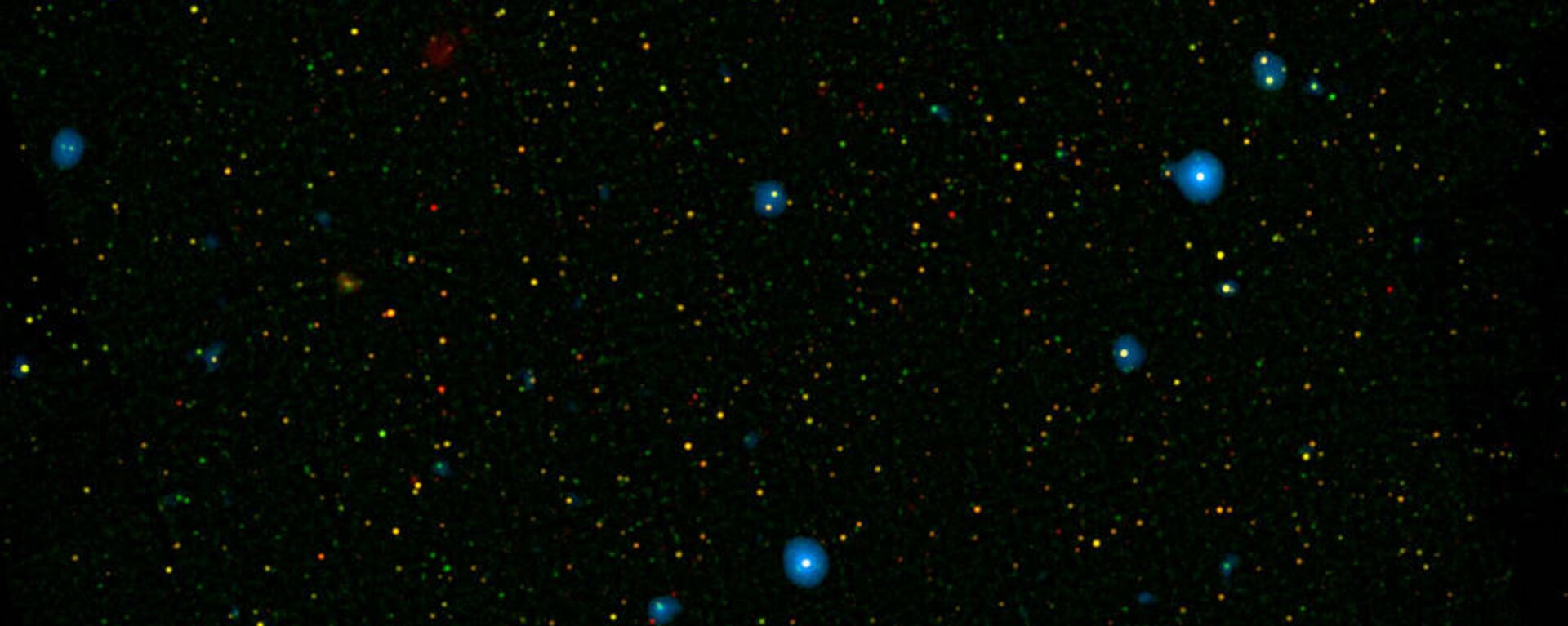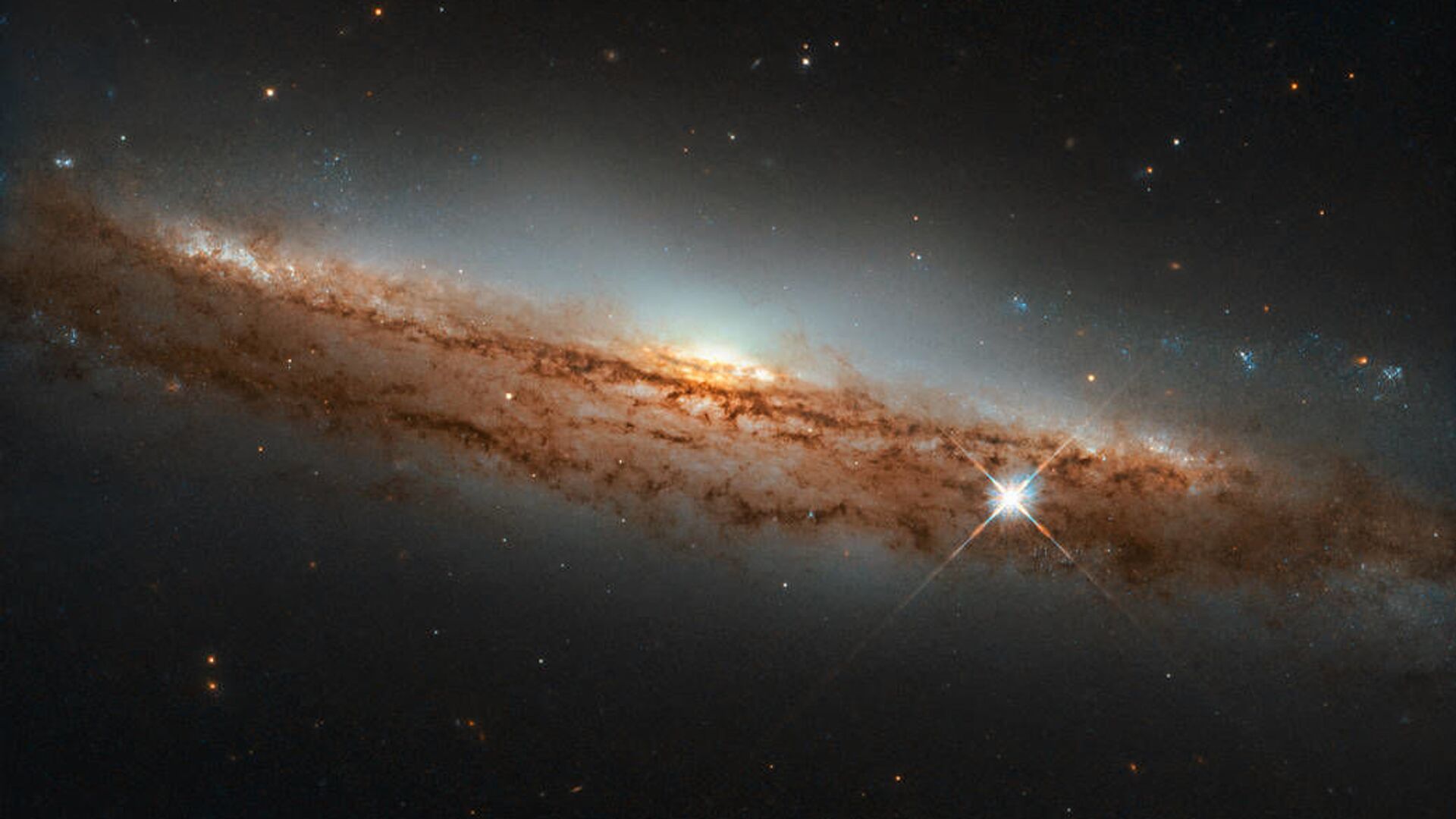https://sputnikglobe.com/20230919/new-research-reveals-dark-energy-holds-key-to-mystery-of-universes-expansion-1113499595.html
New Research Reveals Dark Energy Holds Key to Mystery of Universe's Expansion
New Research Reveals Dark Energy Holds Key to Mystery of Universe's Expansion
Sputnik International
Pioneering research using galaxy clusters has revealed crucial insights into the Universe's expansion and the mysterious force propelling it using the mass-richness relation to calculate the combined mass of sampled groups, showing how larger collections house a more significant number of galaxies.
2023-09-19T18:38+0000
2023-09-19T18:38+0000
2023-09-19T18:38+0000
beyond politics
science & tech
society
japan
egypt
universe
https://cdn1.img.sputnikglobe.com/img/107705/54/1077055417_0:191:1041:777_1920x0_80_0_0_f4ada364f4853121a2a7dda4c2c2e065.jpg
Recent cosmological measurements have substantiated that dark energy, a conjectured unidentified force believed to be accountable for the observed accelerated expansion of the universe, is attributed to nearly 69 percent of the total cosmic content.Such an attribution implies that the remaining 31 percent is allocated to conventional matter, encompassing particles and forces constituting the observable world - and dark matter, an assumed invisible mass theorized to bestow gravitational pull on galaxies and various astronomical bodies.Precision in delineating the universe's matter-energy density stands as a critical endeavor for scientists, offering a key to unlocking the mysteries surrounding dark energy, its role in the historical expansion of the universe, and its implications for the future: an unending expansion or the prospect of a reversal, culminating in a contracting Big Crunch.A proven methodology for quantifying dark energy's presence centers on observing galaxy clusters. The reason behind this lies in the convergence of matter through gravitational attraction over the 13.8 billion-year lifespan of the universe.Through a comparative analysis of the galaxy count and mass within a cluster juxtaposed with numerical simulations, scientists can reliably determine the proportions of matter and energy.The presence of dark matter as the primary contributor to a galaxy cluster's mass complicates the direct measurement of its overall weight. Through the meticulous application of the GalWeight technique (a new approach for assigning galaxy cluster membership) developed by their research team, the scientists ascertained the mass of galaxy clusters in their database. This involved a careful analysis to guarantee the inclusion of only galaxies specific to each set, accomplished by tallying the number of galaxies within each. The research team successfully calculated the aggregate mass of the sampled clusters by leveraging the mass-richness relation (MRR), a known correlation wherein larger clusters harbor a more significant number of galaxies.Subsequently, they used numerical simulations to create galaxy clusters, adjusting dark energy and matter proportions. The simulations that best mirrored real-world galaxy clusters were derived from a universe where 31 percent of its composition was matter.The present endeavor stands near and represents an advancement over the team's prior research, culminating in determining dark energy constituting 68.5 percent, with matter comprising 31.5 percent. In addition, it aligns remarkably well with other assessments of the universe's matter-energy density, indicating a significant advancement towards its precise determination.The study affirms the viability of cluster abundance as a robust tool for constraining cosmological parameters. It complements non-cluster techniques like Type Ia supernovae (thought to be the result of the explosion of a carbon-oxygen white dwarf in a binary system as it goes over the Chandrasekhar limit, either due to accretion from a donor or mergers), CMB anisotropies, baryon acoustic oscillations (a fossilized acoustic wave that propagated through the early universe before freezing into place), and gravitational lensing, Ishiyama added.
https://sputnikglobe.com/20220116/watch-largest-map-of-the-universe-created-by-dark-energy-telescope-can-unveil-secrets-of-cosmos-1092298235.html
https://sputnikglobe.com/20191104/brand-new-lurking-particle-is-altering-future-destiny-of-entire-cosmos-claims-scientist-1077220866.html
japan
egypt
universe
Sputnik International
feedback@sputniknews.com
+74956456601
MIA „Rossiya Segodnya“
2023
Chimauchem Nwosu
https://cdn1.img.sputnikglobe.com/img/07e7/09/01/1113046371_0:99:1536:1635_100x100_80_0_0_9c5c627283eca931c39fe4852bbb301c.jpg
Chimauchem Nwosu
https://cdn1.img.sputnikglobe.com/img/07e7/09/01/1113046371_0:99:1536:1635_100x100_80_0_0_9c5c627283eca931c39fe4852bbb301c.jpg
News
en_EN
Sputnik International
feedback@sputniknews.com
+74956456601
MIA „Rossiya Segodnya“
Sputnik International
feedback@sputniknews.com
+74956456601
MIA „Rossiya Segodnya“
Chimauchem Nwosu
https://cdn1.img.sputnikglobe.com/img/07e7/09/01/1113046371_0:99:1536:1635_100x100_80_0_0_9c5c627283eca931c39fe4852bbb301c.jpg
cosmological measurements, dark energy, matter, dark matter, gravitational pull, astronomical bodies, galaxies, astronomy, geophysics, baryonic matter, atoms, stars, cosmos, cosmic expanse, universe, matter-energy density, big crunch, galaxy clusters, gravitational attraction, the galweight technique, mass-richness relation, matter proportions, cosmic microwave, matter density, cosmic microwave background method, type ia supernovae, cmb anisotropies, baryon acoustic oscillations, gravitational lensing, cosmological parameters.
cosmological measurements, dark energy, matter, dark matter, gravitational pull, astronomical bodies, galaxies, astronomy, geophysics, baryonic matter, atoms, stars, cosmos, cosmic expanse, universe, matter-energy density, big crunch, galaxy clusters, gravitational attraction, the galweight technique, mass-richness relation, matter proportions, cosmic microwave, matter density, cosmic microwave background method, type ia supernovae, cmb anisotropies, baryon acoustic oscillations, gravitational lensing, cosmological parameters.
New Research Reveals Dark Energy Holds Key to Mystery of Universe's Expansion
Pioneering research using galaxy clusters has revealed crucial insights into the universe's expansion and the mysterious force propelling it using the mass-richness relation to calculate the combined mass of sampled groups, showing how larger collections house a more significant number of galaxies.
Recent cosmological measurements have substantiated that dark energy, a conjectured unidentified force believed to be accountable for the observed accelerated expansion of the universe, is attributed to nearly 69 percent of the total cosmic content.
Such an attribution implies that the remaining 31 percent is allocated to conventional matter, encompassing particles and forces constituting the observable world - and dark matter, an assumed invisible mass theorized to bestow gravitational pull on galaxies and various astronomical bodies.
"Cosmologists believe that only about 20 percent of the total matter is made of regular or 'baryonic' matter, which includes stars, galaxies, atoms, and life," Mohamed Abdullah, an astronomer at the National Research Institute of Astronomy and Geophysics in Egypt and Chiba University in Japan, describes.

16 January 2022, 15:07 GMT
Precision in delineating the universe's matter-energy density stands as a critical endeavor for scientists, offering a key to unlocking the mysteries surrounding dark energy, its role in the historical expansion of the universe, and its implications for the future: an unending expansion or the prospect of a reversal, culminating in a contracting Big Crunch.
A proven methodology for quantifying dark energy's presence centers on observing galaxy clusters. The reason behind this lies in the convergence of matter through gravitational attraction over the 13.8 billion-year lifespan of the universe.
Through a comparative analysis of the galaxy count and mass within a cluster juxtaposed with numerical simulations, scientists can reliably determine the proportions of matter and energy.
"Because present-day galaxy clusters have formed from matter that has collapsed over billions of years under its own gravity… the number of clusters observed at the present time, the so-called 'cluster abundance,' is very sensitive to cosmological conditions and, in particular, the total amount of matter,” expresses astronomer Gillian Wilson of the University of California Merced.
The presence of dark matter as the primary contributor to a galaxy cluster's mass complicates the direct measurement of its overall weight. Through the meticulous application of
the GalWeight technique (a new approach for assigning galaxy cluster membership) developed by their research team, the scientists ascertained the mass of galaxy clusters in their database. This involved a careful analysis to guarantee the inclusion of only galaxies specific to each set, accomplished by tallying the number of galaxies within each. The research team successfully calculated the aggregate mass of the sampled clusters by leveraging the mass-richness relation (MRR), a known correlation wherein larger clusters harbor a more significant number of galaxies.
Subsequently, they used numerical simulations to create galaxy clusters, adjusting dark energy and matter proportions. The simulations that best mirrored real-world galaxy clusters were derived from a universe where 31 percent of its composition was matter.
The present endeavor stands near and represents an advancement over the team's
prior research, culminating in determining dark energy constituting 68.5 percent, with matter comprising 31.5 percent. In addition, it aligns remarkably well with other assessments of the universe's matter-energy density, indicating a significant advancement towards its precise determination.
"We have succeeded in making the first measurement of matter density using the MRR, which is in excellent agreement with that obtained by the Planck team using the cosmic microwave background method," noted astronomer Tomoaki Ishiyama of Chiba University.

4 November 2019, 10:05 GMT
The study affirms the viability of cluster abundance as a robust tool for constraining cosmological parameters. It complements non-cluster techniques like Type Ia supernovae (thought to be the result of the explosion of a carbon-oxygen white dwarf in a binary system as it goes over the Chandrasekhar limit, either due to accretion from a donor or mergers), CMB anisotropies, baryon acoustic oscillations (a fossilized acoustic wave that propagated through the early universe before freezing into place), and gravitational lensing, Ishiyama added.





